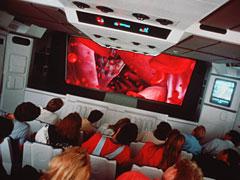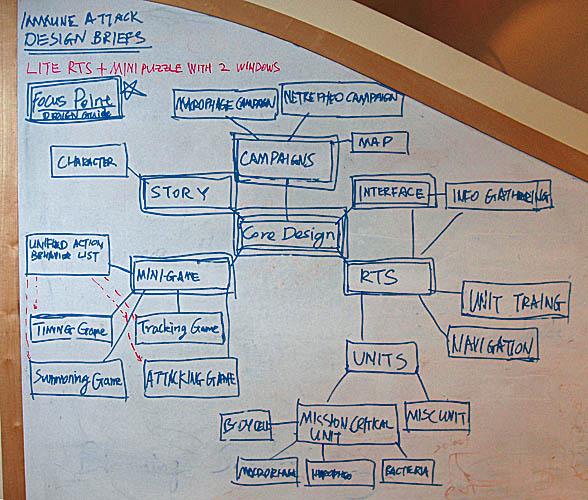Immune Attack is an educational video game designed to teach immunology to high school students. Produced by the Federation of American Scientists with a grant from the National Science Foundation, v1 was designed at the Unversity of Southern California in collaboration with Brown University. Early in the process, I assembled The Look and Motion Reference Library below to help the game designer, programmers, and my art team of college students from both universities to work together towards a look and feel consistent with the graphics in the High school textbook, since the students are the primary users. But the videogame does not need to mimic the high school text as the producers (FAS) hope for a broader audience.
Here is a demo of what we made.
I. Referenced Media
Movies:
Fantastic Voyage 1966
Innerspace 1987
Fight Club 1999
Osmosis Jones 2001
Television:
NOVA: The Universe Within 1995
House: Mob Rules2004
Medical Illustrations:
Gary Carlson (GC) 1990-present
SIGGRAPH Theater 2004
Books
Theme Park Rides:
Epcot : Body Wars 1989


Other examples to consider
Biology: Exploring Life (High school text)
Lanidol Medical Team
3 Kings – Bullet Scene
The Human Body – Imax 2001
The Incredible Human Body – National Geographic – 2002
Scott Fischer’s Nintendo Game
II. Look and Motion Reference Library
1. 2D Icons
XFERABLE TO REAL_TIME (X2RT)
The density of Red Blood cells in the vein can be shown by clamping down
When release, engage motion blur
Create virtual clamping tool and add Camera Shake to show Breathing.
The density of Red Blood cells in the vein can be shown by clamping down
When release, engage motion blur
Create virtual clamping tool and add Camera Shake to show Breathing.
X2RT:
Stylized icons (Sprites) moves more accurately than in Janeway.
Here more evidence that the way something moves is more telling of its character than the way it looks)
Stylized icons (Sprites) moves more accurately than in Janeway.
Here more evidence that the way something moves is more telling of its character than the way it looks)
2. Cell Shaded 3D Geometry (to Mimic 2D Icons)
X2RT: Render 3D Selectin game with cell shading.
4. Transmission Electron Microscope
5a. Scanning Electron Microscope
Note: This is a visualization of the brain.
5b. Scanning Electron Microscope (Color to highlight)
6. Fluorescence Microscope
7a. 3D CG Diagrammatic
X2RT: Bullet Time
7b. 3D CG Ribbon Diagram
8. 3D CG ‘Realistic’
X2RT: 2D Sprites can look like 3D geometry!
9a. 3D CG Robot Metaphor
9b. 3D CG Nanobot Metaphor
10a. Miniature models with Practical effects
10b. Miniature models with Practical and Analog effects
>> Transitions between different Looks
QUESTIONS
1. Programmers:
Which of these effects does the game engine support?
a.) 2D Post Effects: Fog/Haze, Depth of Field, Glow, Depth of field
b.) Shaders: Fake sub-surface scattering, Refraction, Procedural Volumetric Shaders
c.) 3D Effects: Deforming Geometry, Dynamic, Blobs
d.) 4D Effects: Animated Bump map
Game designers:
Does the visual vocabulary support ALL the game play?

Does the visual vocabulary support ALL the game play?
